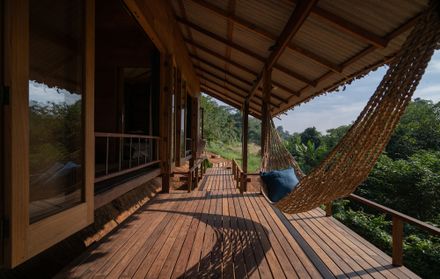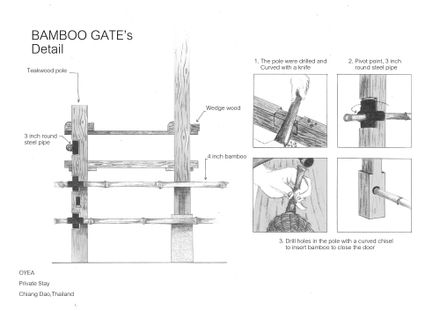ARCHITECTS
Yangnar Studio
GENERAL CONSTRUCTING
Chumchangmai
LEAD ARCHITECTS
Dechophon Rattanasatchatham, Apiwat Chainarin
LEAD TEAM
Dechophon Rattanasatchatham
DESIGN TEAM
Apiwat Chainarin
TECHNICAL TEAM
Metee Moonmuang
PHOTOGRAPHS
Rungkit Charoenwat
AREA
72 M²
YEAR
2024
LOCATION
Thailand
CATEGORY
Houses
Text description provided by architect.
The hills, the olive trees, and the community settled at Doi Luang are the contextual elements that existed before.
Therefore, our team is strongly concerned with the architectural process that encourages and preserves the site's distinctiveness and the original environment in the area.
The basic thinking of the villagers inspired us. The elements we experienced during our visits to the local people on the hills were improvised into the design.
We started with the building orientation, which was placed parallel to the contour line to reduce the need to adjust the ground elevation under the house. The ground was carved into steps for convenience and left as a water drainage path.
The walkway up to the house still maintains the original slope, using only a hoe to scoop the soil into steps.
Walking along the slope, past the group of olive trees toward the house, slows down all perceptions, opening the mind to feel the surrounding environment more clearly.
You will see Doi Luang Chiang Dao standing elegantly when you reach the deck. At that moment, you will feel smaller and ready to embrace the greatness of the nature around you.
Our design team tried to keep the building's proportion compact and close to the hillside.
Materials were selected to blend in with the community and the surrounding environment.
Throughout all the construction processes, problem solving, and details improvisation were always important to find the perfect solution for the on-site constraints.
For example, the parking area was conceived after the building was constructed, by adjusting the land level.
The soil from there was used to fill in the back of the house, creating a stargazing area and a fire pit area. This was beyond the initial planning, but it greatly enhanced the site's potential.
The firewood shed (Pham) was entrusted to our Lisu craftsmen to manage and construct based on their own experiences. This is also seen as the beauty of local wisdom that shapes architecture.
Drawing: Eva Herr, Anuchart Thidwongsa, Staryu Sankham
Narrative text: Pongsatorn swadchatchwan























